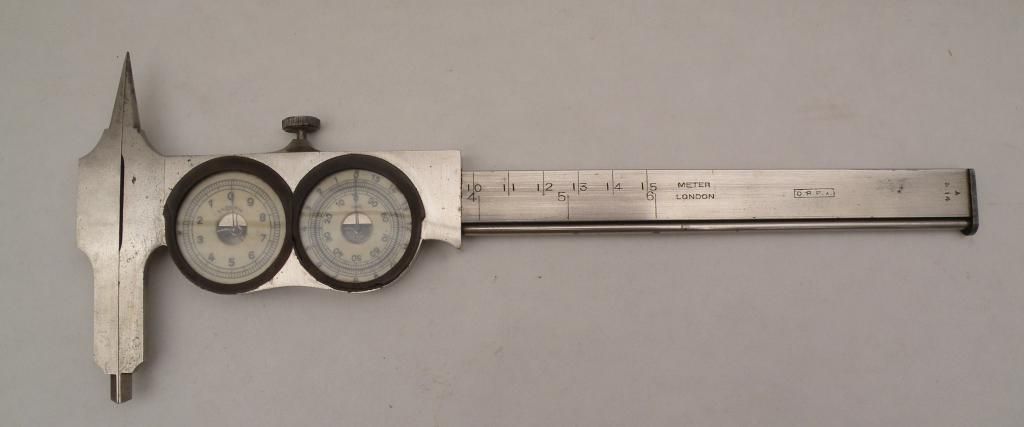rivett608
Diamond
- Joined
- Oct 25, 2002
- Location
- Kansas City, Mo.
Normally I buy really old tools for my collection but every now and then I buy something a little modern. This was just too cool looking not to own.... one thing about collecting for over 35 years is you know what you have never seen before. So when I saw these I felt I had to buy them just to take a good look at them...... and when opened the box I just jumped with excitement! I think they are German and from the early 20th century..... but that is only a guess. Does anyone know anything about what D. R. P. A. means? I'm guessing it is the maker.
What is cool is these have a dial for metric, hence "meter" and a dial for inches hence "London" meaning English measure....... Notice there are two separate rack gears and since the gears are different diameters one is set deeper than the other so both dials line up with each other....... the inch dial also has fractions buy 16ths on it's outer scale.
To me this sort of reminds on the eyes of M.I.T.'s Kismet......
Also being a new year it's time to Thank Don again for giving us a forum where we can share such things as this.... THANK YOU DON...... and I just noticed this my 5,400th post!




What is cool is these have a dial for metric, hence "meter" and a dial for inches hence "London" meaning English measure....... Notice there are two separate rack gears and since the gears are different diameters one is set deeper than the other so both dials line up with each other....... the inch dial also has fractions buy 16ths on it's outer scale.
To me this sort of reminds on the eyes of M.I.T.'s Kismet......
Also being a new year it's time to Thank Don again for giving us a forum where we can share such things as this.... THANK YOU DON...... and I just noticed this my 5,400th post!





